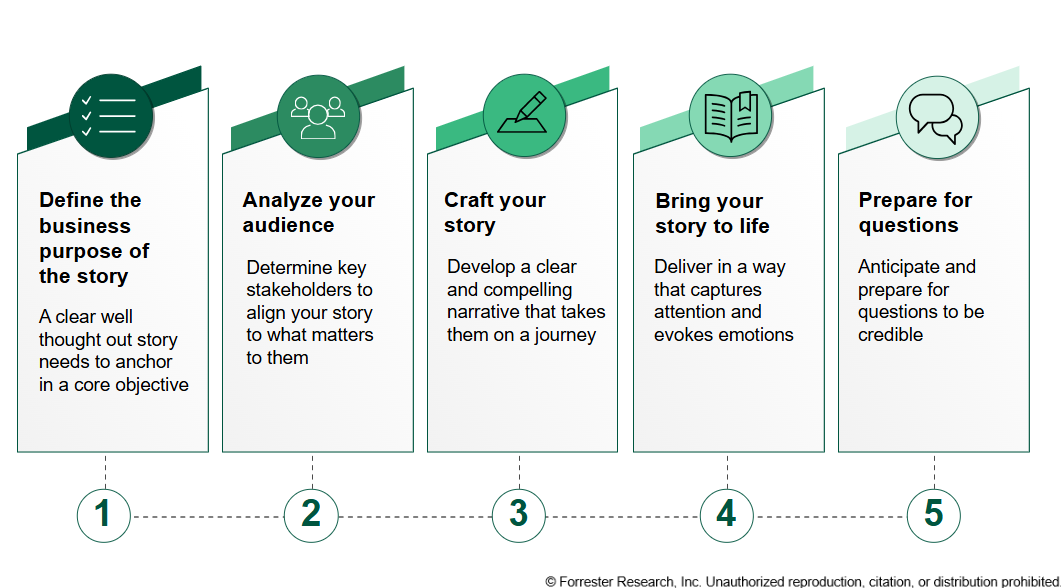Beyond The Metrics: How B2B Marketing Pros Should Use Storytelling Techniques To Communicate Value
As a marketing professional, you live and breathe metrics: website traffic, leads generated (although you should be talking about buying groups engaged), pipeline contribution, engagement rates, and more. But when it comes to communicating marketing’s business value, the numbers alone just don’t cut it. They either aren’t understood by marketing’s stakeholders or they’re too disconnected from what those stakeholders personally care about.
To truly resonate with stakeholders, B2B CMOs and other marketing leaders must do more than recite KPIs off their dashboards. You need a compelling story.
Why Storytelling Matters In Marketing
It’s a sad thing to say, but most marketers aren’t very good at the marketing of marketing. They’ve honed their craft with storytelling in brand campaigns and portfolio and product messaging yet often fail to apply those same storytelling skills to communicate marketing’s value. It’s a strategic skill that helps translate data into business impact, shift perceptions of marketing from cost center to growth driver, and inspire action and investment with stakeholders.
At Forrester, we’ve defined a five-step framework to help CMOs and marketing leaders craft compelling, data-informed narratives that elevate their role and marketing’s contribution.

-
Start With The Business Purpose Of Your Story
Before you build your story, ask: What am I trying to achieve?
- Are you shifting perceptions of marketing?
- Justifying budget or headcount?
- Preparing for a strategic pivot?
Define your objective, then identify the marketing initiatives that best support it. These are your narrative anchors.
-
Know Your Audience To Align Your Story
You already segment your customers — do the same with your stakeholders.
- Executives want to see how marketing drives revenue and growth.
- Sales wants to know how you’re helping them close deals.
- Finance wants to understand ROI and efficiency.
- … and so on.
Tailor your message to what each group cares about. Don’t rely on marketing jargon — use their language. Aim to inspire, not just inform.
-
Build A Narrative, Not A Report
Structure your story like a campaign:
- Beginning: What was the challenge or opportunity?
- Middle: What actions did marketing take?
- End: What were the outcomes, and why do they matter?
Use data to support your points, but don’t let it dominate. Add emotional hooks — such as customer wins, team milestones, or market shifts — to make your story stick.
-
Bring Your Story To Life
How you tell the story matters as much as what you say.
- Choose the right delivery format: presentation, video, dashboard, or report.
- Use visuals to simplify complex data.
- Create contrast (before vs. after), tension, and resolution.
- Invite interaction by asking questions and encouraging feedback.
Think of it as a performance, not just a presentation. And practice beforehand.
-
Anticipate And Embrace Questions
A good story sparks curiosity. Be ready to:
- Address objections and clarify assumptions.
- Reinforce your key messages through answers.
- Stay calm and adaptable when the unexpected comes up.
Treat questions as engagement, not interrogation. They’re a sign that your story is landing (or at least being heard).
A Final Thought: Storytelling Is A Power Skill
As a marketing professional, you already know how to craft compelling messages for customers. Now it’s time to apply that same skill internally. By mastering storytelling, you’ll influence strategic decisions, secure greater investment, and elevate the perception of marketing. Because when you tell the right story, marketing isn’t just seen — it’s believed.
Forrester clients can read my latest research and schedule a guidance session to discuss how to drive change in the way you tell marketing’s value story.
